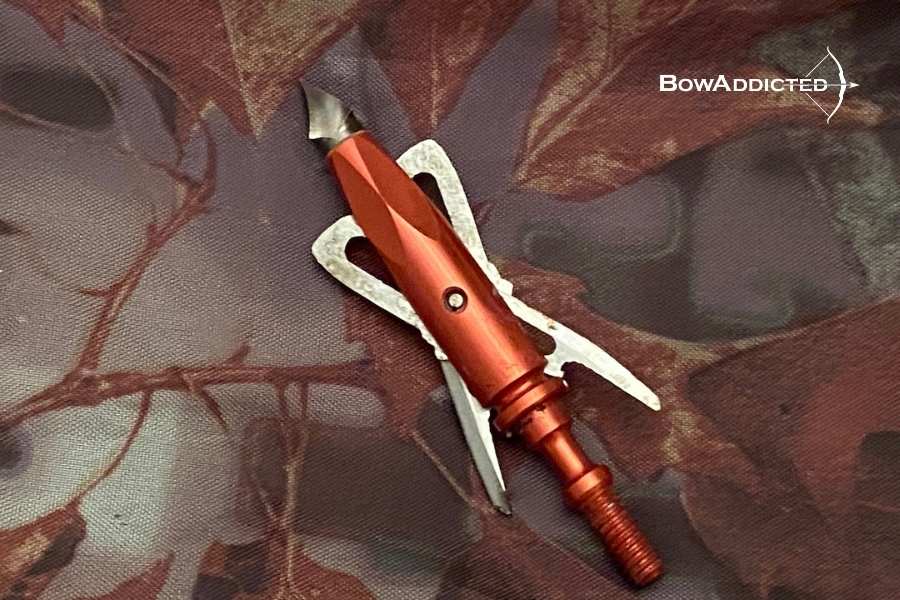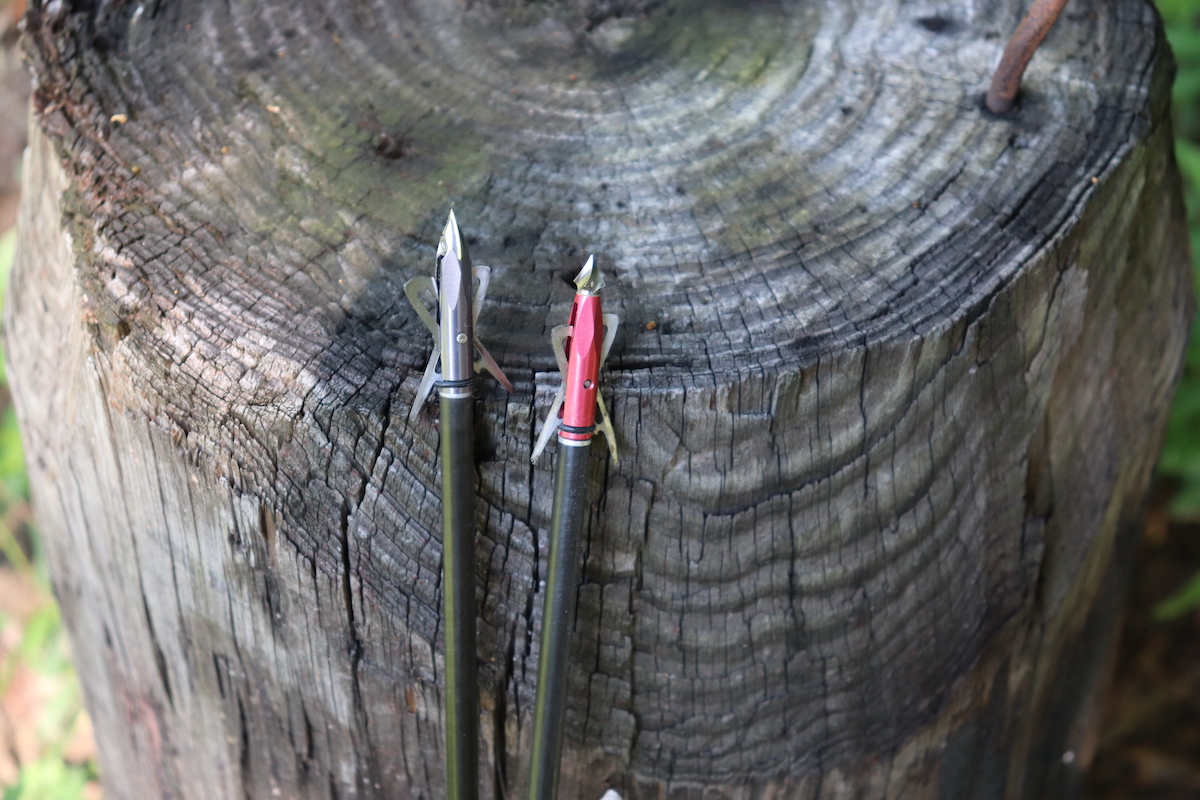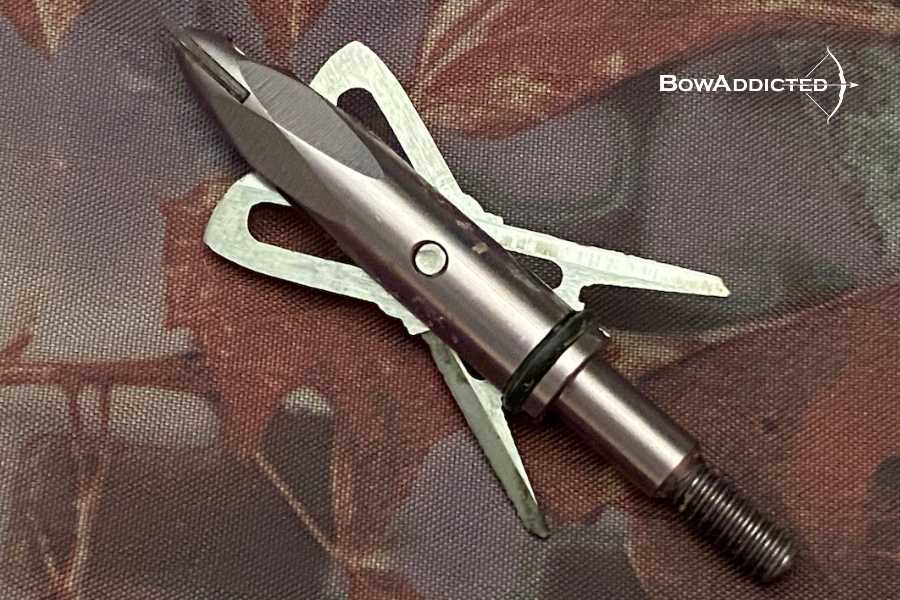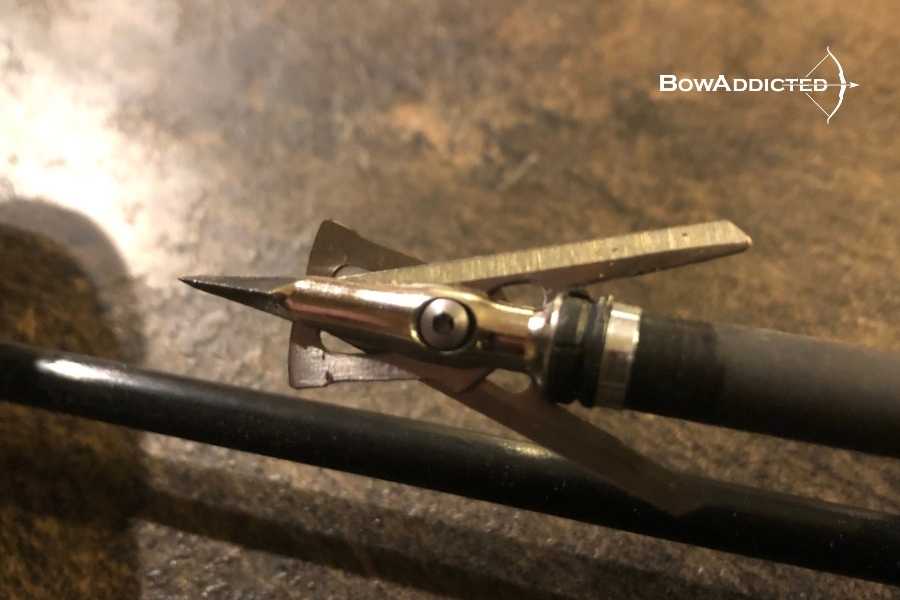Today’s archer has a wealth of options to choose from when selecting a broadhead for use. A trip to any local hunting/outdoor retail store will reveal broadheads of fixed-blade and mechanical designs, too numerous to count.
This leaves many archers with many questions, regarding which broadhead is right for his or her personal use.
Contents (Jump to Topic)
ToggleWhile I certainly cannot speak as to the capabilities of every broadhead on the market, there are several particular brands that I am quite familiar with. Of these brands, I have had the most significant amount of experience with Rage Broadheads.
How They Stack Up
FeraDyne Outdoors first introduced the Rage Broadhead in 2006, at which time only a standard 2-blade and 3-blade model were available.
Since this time, the company has introduced several variants of their standard broadhead, including the Chisel-Tip and Hypodermic models. Each of these sub-models carries their own distinct features and attributes.
Over the past 15-years, I have used three different models of Rage Broadheads, including the Standard 2-Blade, Chisel-Tip, and Hypodermic. The following is a detailed account of my experiences with each.
Josh Boyd
Hands-On Review Standard Rage Broadhead
Rage Standard Broadhead
Upon its release, the Standard Rage Broadhead was often heralded as a technical breakthrough, due to its use of the company’s proprietary Slip-Cam Technology.
Check Latest PriceThis technology allows the Rage Broadhead’s blades to slide rearward into the fully deployed position, rather than pivoting open, as is the case with most mechanical heads.
The Standard Rage Broadhead uses specialty blades with inlaid tracks, which allow them to slide about on a fixed roll pin that is centrally located within the broadhead’s body.
Prior to deployment, these blades are held in place by a specialty collar, on which the blade’s shoulders are seated. In its standard form, the Rage broadhead is tipped with a sharpened bleeder blade, affixed by a small set screw.
- .035” stainless steel blades
- .039” cut-on-contact blade
- Now redesigned to include Shock Collar
Personal Experience
I first began using the Standard Rage Two-Blade Broadhead immediately following its 2006 release. Prior to making the switch to Rage, I had always used a fixed blade broadhead, though I had considered taking up the use of a mechanical head.
However, I had remained skeptical toward the reliability of most mechanicals of the era.

Best Uses: Archers who shoot bows with a moderate draw weight, where the use of other mechanical broadheads might present issues with penetration.
Josh Boyd
I became an instant fan of the Standard Rage Two-Blade Broadhead. I found these heads to be extremely accurate, as they flew identically to my field tips. This was quite the departure from fixed blade heads that I had used in the past, many of which flew rather erratically.
Upon shooting my first deer with the Standard Rage Two-Blade, I was blown away. The wound channel left by the Rage was nothing short of devastating.
The particular deer that was shot traveled no more than 40 yards before expiring, leaving an unimaginable blood trail.
I continued to use Standard Rage Two-Blade Broadheads for more than ten years. During this period, I harvest over ten deer with the use of these heads. In each case, the deer that was shot expired within eyesight, leaving behind blood trails that required little in the way of attentiveness to follow.
Hands-On Review Chisel-Tip Rage Broadhead

Rage Chisel Tip Broadhead
This is quite impressive when one considers the fact that few competing mechanicals is designed to avoid substantial damage at the hands of a similar impact.
Check Latest PriceThe Rage Chisel-Tip features a specialty hardened tip, much like those found on earlier fixed blades. This tip replaces the bleeder blade found on Standard Rage Broadheads and is largely impervious to the effects of direct impact with bone.
The Chisel-Tip also employs the use of a Shock-Collar, which absorbs excessive energy transferred to the head’s blades.
- .035” stainless steel blades
- Hardened chisel tip
- Specialty Shock-Collar
Personal Experience
I made the switch to the Rage Chisel-Tip, after becoming intrigued by its revised design. True to form, the Rage Chisel Tip flew just as well as the Standard Rage Two-Blade Broadhead.
Accuracy was never an issue, as each head flew in the same fashion as a field tip. To say that I was pleased would be quite an understatement.

Best Uses: Archers shooting bows with higher draw weights, who hope to negate issues related to poor penetration when bone contact occurs.
Josh Boyd
Upon heading to the field, I found Rage’s claims regarding the Chisel-Tip’s bone-crushing potential to be accurate.
I used Chisel-Tips for two seasons, during which time I harvested a total of three deer. Of the three, two were found to have had broken ribs following the shot, which did not prevent me from obtaining a full pass-through.
The third of the three deer that I killed using the Rage Chisel-Tip, was unintentionally shot in the rear of the onside shoulder.
Much to my surprise, my arrow passed through this segment of the shoulder with no issue before departing the deer’s body cavity on the opposite side.
Hands-On Review Rage Hypodermic Broadhead
Rage Hypodermic Broadhead
The Hypodermic was among the first Rage variants to take on a decidedly different profile from prior Rage variants. Instead of the standard Rage ferrule, the Hypodermic features a more streamlined body, which ends in a sharpened pointed tip.
Check Latest PriceThe Hypodermic features no separate blade or chisel at its tip, as was the case in prior models. FeraDyne promoted this redesign for its ability to provide enhanced strength.
Due to its streamlined design, the Rage Hypodermic is known for its stability in flight, and superior penetration. It is also important to note that this particular Rage variant, much like its Chisel Tip predecessor, is renowned for its ability to crush through bone with minimal difficulty.
Many also find the Hypodermic to be more durable than other Rage variants.
- .035” stainless steel blades
- One-piece ferrule
- Hybrid tip design
Personal Experience
I have used the Rage Hypodermic for the past three seasons, after taking interest in its solid-ferrule design. Like all prior Rage Broadheads that I had used, the Hypodermic exhibited excellence in flight.
It was impossible to distinguish any difference in flight characteristics between the Hypodermic and my field tips.

Best Uses: Great all-around broadhead that combines bone-breaking power with excellent penetration. Recommended for use with most any bow.
Josh Boyd
Over the past three seasons, I have taken two deer with the use of Rage Hypodermic Broadheads, both of which fell within eyesight. In both instances, the accompanying blood trail was quite easy to follow, leaving no doubt to the Hypodermic’s devastating qualities. On each shot, I also received a clean pass-through.
The second of these two harvests, however, warrants further discussion. In this particular instance, my shot impacted further forward than I had hoped, driving my arrow directly through both front shoulders.
Astonishingly, the Hypodermic punched through both shoulder bones, breaking each in the process, before exiting on the deer’s far side. This doe only made it a total of ten yards before expiring.
Final Thoughts
Throughout the past decade and a half, I have been more than happy with the results that I have obtained when using Rage Broadheads. I do not anticipate switching to the use of any other brand of broadhead in the near future.
Rage Broadheads have flown true in every instance and provided devastating results when used in a hunting scenario.
Of the three individual models of Rage Broadheads reviewed above, each has proved more than capable in every manner. When seeking additional penetration, the Standard Rage Broadhead makes an excellent choice.
On the other hand, the Chisel-Tip provides plenty of bone-breaking power when needed. Perhaps the best of both worlds, the Rage Hypodermic is a great choice for those looking for each of these two qualities in abundance.








